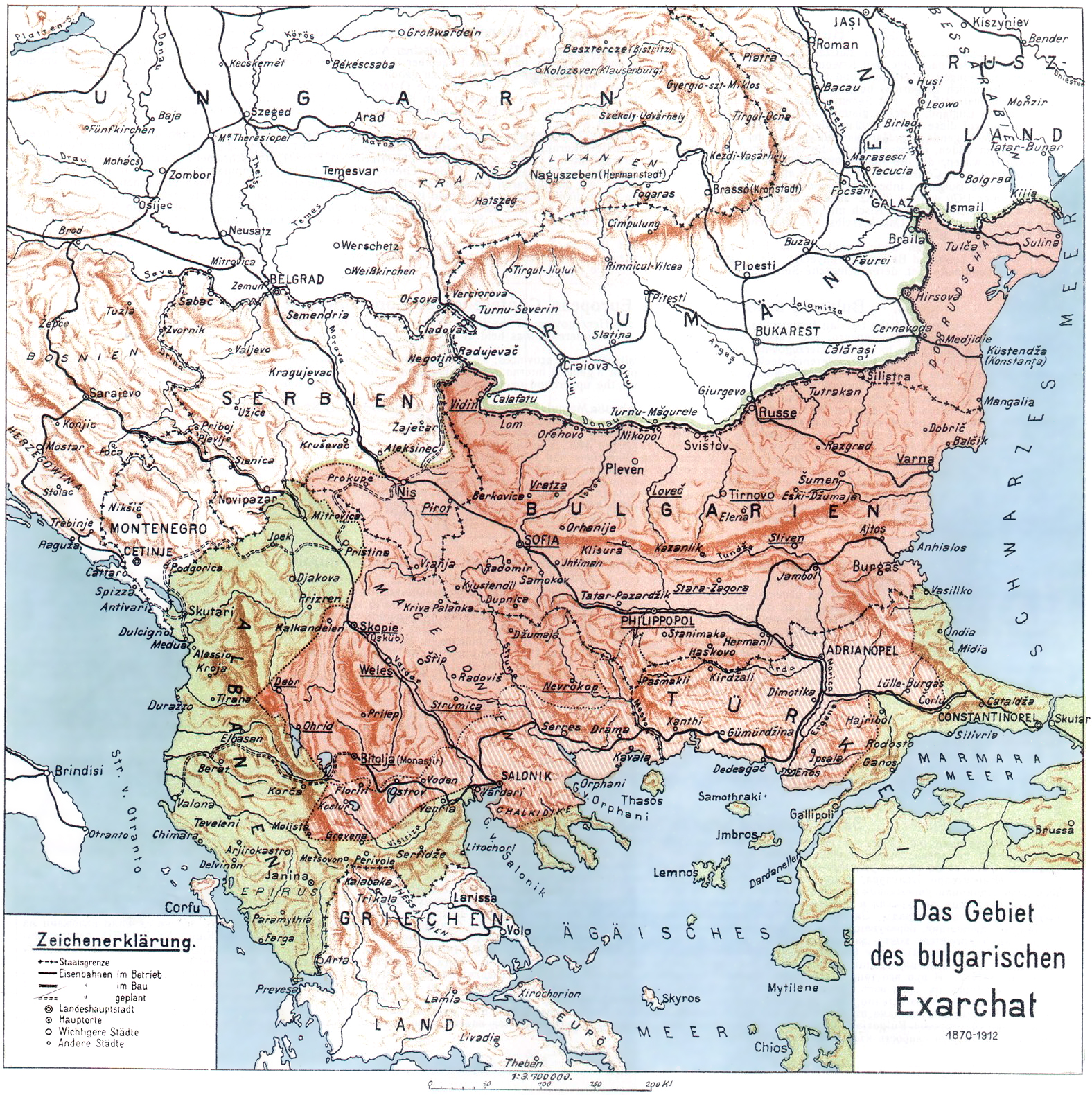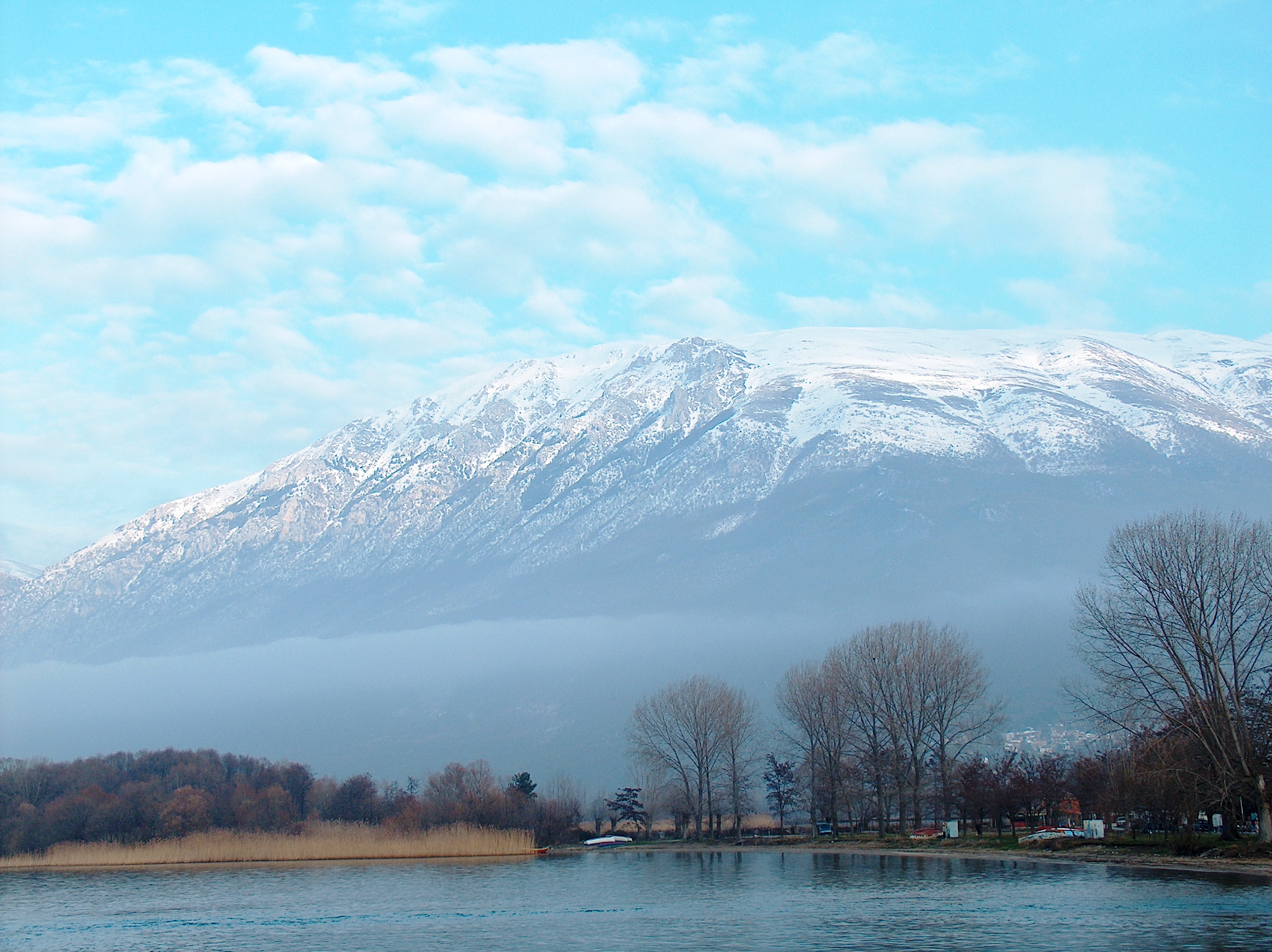|
Bolno
Bolno ( mk, Болно) is a village in the Resen Municipality of North Macedonia, near the mountain of Galičica. Located under east of the municipal centre of Resen, the village has 237 residents. It is also home to a football club, FK Ilinden. History Bolno is located near the Iron Age site of Selishte, which excavations of the 2010s characterized as an Illyrian fort in the Prespa-Ohrid lakeland region. In the early 20th century, the village had population of 640 Bulgarian Exarchists. There was also Bulgarian school in Bolno (Bouno). During the Ilinden–Preobrazhenie Uprising of 1903, Bolno was looted and its 96 houses were burnt down. Demographics Bolno has historically been inhabited by Orthodox Bulgarians. According to the censuses after 1948 the local population is consisted of ethnic Macedonians. People from Bolno *Dimitar Bogoevski (1918 - 1942), communist revolutionary and poet * Evtim Bogoev (? - 1908), revolutionary, IMARO The Internal Macedonian R ... [...More Info...] [...Related Items...] OR: [Wikipedia] [Google] [Baidu] |
Resen Municipality
Resen ( mk, Ресен ) is a municipality in southwestern Republic of North Macedonia. '' Resen'' is also the name of the town where the municipal seat is found. Resen Municipality is located in the Pelagonia Statistical Region. Geography The municipality borders Ohrid Municipality to the west, Demir Hisar Municipality to the northeast, Bitola Municipality to the east, and Greece and Albania to the south. Demographics According to the last national census from 2021, Resen Municipality has 14,373 inhabitants. Ethnic groups in the municipality include: Mother tongues in the municipality include: * Macedonian = 12,943 (76.9%) * Albanian = 1,885 (11.2%) * Turkish = 1,766 (10.5%) * Roma = 113 (0.7%) * others. Religions in the municipality include: * Orthodox = 12,599 (74.9%) * Muslim = 3,927 (23.3%) * others. Orthodox Macedonians inhabit all settlements in the municipality of Resen, except Kozjak and Gorna Bela Crkva. During the late Ottoman period, Macedonian Muslims ... [...More Info...] [...Related Items...] OR: [Wikipedia] [Google] [Baidu] |
Resen (town)
Resen ( mk, Ресен ) is a town in southwestern North Macedonia, with just under 9,000 inhabitants. Resen is approximately equidistant between Bitola and Ohrid. The town rises above sea level and is situated near Lake Prespa. Resen is also the only town in the Prespa Lake area and is the seat of Resen Municipality. Name The name of the city in Macedonian is ''Resen'' (Ресен) and in Turkish ''Resne'', while in Albanian it is known as ''Resnjë'' (definite form: ''Resnja''). In Aromanian, it is ''Areshanj'' and in Greek ''Resinion'', Ρησίνιον. History The ancient Illyrian city of Damastion (in greek Δαμάστιον) may be near Resen. Resen's history dates back to Roman times when the famous road ''Via Egnatia'' was built, passing through the city. During the Middle Ages, the Prespa area was part of the Bulgarian empire under Samuil. After the Battle of Klyuch, some of Samuil's soldiers, who were each blinded in one eye, settled in a village on the shore o ... [...More Info...] [...Related Items...] OR: [Wikipedia] [Google] [Baidu] |
List Of Sovereign States
The following is a list providing an overview of sovereign states around the world with information on their status and recognition of their sovereignty. The 206 listed states can be divided into three categories based on membership within the United Nations System: 193 member states of the United Nations, UN member states, 2 United Nations General Assembly observers#Present non-member observers, UN General Assembly non-member observer states, and 11 other states. The ''sovereignty dispute'' column indicates states having undisputed sovereignty (188 states, of which there are 187 UN member states and 1 UN General Assembly non-member observer state), states having disputed sovereignty (16 states, of which there are 6 UN member states, 1 UN General Assembly non-member observer state, and 9 de facto states), and states having a political status of the Cook Islands and Niue, special political status (2 states, both in associated state, free association with New Zealand). Compi ... [...More Info...] [...Related Items...] OR: [Wikipedia] [Google] [Baidu] |
Dimitar Bogoevski
Dimitar ( bg, Димитър; Macedonian: Димитар) is a South Slavic masculine given name. It is widely found in Bulgaria and North Macedonia. Dimitar is derived from Saint Demetrius (280–306), alternate form of Demetrius. Containing the Proto Indo-European language ''mater'' "mother", it is rooted in the Greek goddess Earth mother Demeter. The most common short for Dimitar is Mitko, while people with the name Dimitar are informally called also Mite, Mito, Dimo, Dimi, Dimcho, Dimko, Dimka, Dime. *Dimitar Agura (1849–1911), Bulgarian historian, professor of history at Sofia University and rector of the university *Dimitar Andonovski (born 1985), Ethnic Macedonian singer * Dimitar Avramovski–Pandilov (1899–1963), ethnic Macedonian painter *Dimitar Berbatov (born 1981), Bulgarian footballer *Dimitar Blagoev (1856–1924), Bulgarian political leader, the founder of Bulgarian socialism *Dimitar Bosnov (born 1933), defender for PFC Cherno More Varna from 1955 to 1970 *Dimi ... [...More Info...] [...Related Items...] OR: [Wikipedia] [Google] [Baidu] |
Macedonians (ethnic Group)
Macedonians ( mk, Македонци, Makedonci) are a nation and a South Slavic ethnic group native to the region of Macedonia in Southeast Europe. They speak Macedonian, a South Slavic language. The large majority of Macedonians identify as Eastern Orthodox Christians, who speak a South Slavic language, and share a cultural and historical "Orthodox Byzantine–Slavic heritage" with their neighbours. About two-thirds of all ethnic Macedonians live in North Macedonia and there are also communities in a number of other countries. The concept of a Macedonian ethnicity, distinct from their Orthodox Balkan neighbours, is seen to be a comparatively newly emergent one. The earliest manifestations of an incipient Macedonian identity emerged during the second half of the 19th century among limited circles of Slavic-speaking intellectuals, predominantly outside the region of Macedonia. They arose after the First World War and especially during 1930s, and thus were consolidated ... [...More Info...] [...Related Items...] OR: [Wikipedia] [Google] [Baidu] |
Ilinden–Preobrazhenie Uprising
The Ilinden–Preobrazhenie Uprising, or simply the Ilinden Uprising of August–October 1903 ( bg, Илинденско-Преображенско въстание, Ilindensko-Preobrazhensko vastanie; mk, Илинденско востание, Ilindensko vostanie; el, Εξέγερση του Ίλιντεν, Eksegersi tou Ilinden), was an organized revolt against the Ottoman Empire, which was prepared and carried out by the Internal Macedonian-Adrianople Revolutionary Organization, with the support of the Supreme Macedonian-Adrianople Committee. The name of the uprising refers to ''Ilinden'', a name for Elijah's day, and to ''Preobrazhenie'' which means Transfiguration. Some historians describe the rebellion in the Serres revolutionary district as a separate uprising, calling it the Krastovden Uprising ( Holy Cross Day Uprising), because on September 14 the revolutionaries there also rebelled. The revolt lasted from the beginning of August to the end of October and covered a v ... [...More Info...] [...Related Items...] OR: [Wikipedia] [Google] [Baidu] |
Bulgarian Exarchists
Bulgarian Millet ( tr, Bulgar Milleti) was an ethno-religious and linguistic community within the Ottoman Empire from the mid-19th to early 20th century. The semi-official term ''Bulgarian millet'', was used by the Sultan for the first time in 1847, and was his tacit consent to a more ethno-linguistic definition of the Bulgarians as a nation. Officially as a separate Millet in 1860 were recognized the Bulgarian Uniates, and then in 1870 the Bulgarian Orthodox Christians (''Eksarhhâne-i Millet i Bulgar''). At that time the classical Ottoman Millet-system began to degrade with the continuous identification of the religious creed with ethnic identity and the term ''millet'' was used as a synonym of ''nation''. In this way, in the struggle for recognition of a separate Church, the modern Bulgarian nation was created. The establishment of the Bulgarian Exarchate in 1870, meant in practice official recognition of a separate Bulgarian nationality, and in this case the religious aff ... [...More Info...] [...Related Items...] OR: [Wikipedia] [Google] [Baidu] |
Illyrians
The Illyrians ( grc, Ἰλλυριοί, ''Illyrioi''; la, Illyrii) were a group of Indo-European-speaking peoples who inhabited the western Balkan Peninsula in ancient times. They constituted one of the three main Paleo-Balkan populations, along with the Thracians and Greeks. The territory the Illyrians inhabited came to be known as Illyria to later Greek and Roman authors, who identified a territory that corresponds to most of Albania, Montenegro, Kosovo, much of Croatia and Bosnia and Herzegovina, western and central Serbia and some parts of Slovenia between the Adriatic Sea in the west, the Drava river in the north, the Morava river in the east and in the south the Aous (modern Vjosa) river or possibly the Ceraunian Mountains. The first account of Illyrian peoples dates back to the 6th century BC, in the works of the ancient Greek writer Hecataeus of Miletus. The name "Illyrians", as applied by the ancient Greeks to their northern neighbors, may have referred to a ... [...More Info...] [...Related Items...] OR: [Wikipedia] [Google] [Baidu] |
FK Ilinden (Bolno)
Ilinden (Bulgarian/ Macedonian Cyrillic: Илинден) or Ilindan ( Serbian Cyrillic: Илиндан), meaning "Saint Elijah's Day", may refer to: Events * Republic Day (North Macedonia), 2 August Geographic locations Bulgaria * Ilinden, Blagoevgrad Province, a village * Ilinden, Sofia, an urban municipality North Macedonia * Ilinden Municipality * Ilinden (village) Association football clubs * FK Ilinden 1955 Bašino * FK Ilinden Skopje * Rockdale Ilinden FC Other meanings * ''Ilinden'' (memorial), a sculpture in Kruševo, North Macedonia * ''Ilinden'' (novel), by Dimitar Talev * Ilinden (organization), a Bulgarian revolutionary organization 1921–1947 * ''Ilinden'', a boat built in 1924 which sank in the 2009 Lake Ohrid boat accident On 5 September 2009, the ''Ilinden'' sightseeing boat with a group of 57 foreign tourists on board, of which 55 were Bulgarian, sank in Lake Ohrid, southwestern Republic of Macedonia. Fifteen people died. The sinking of the ''Ilinden'' ... [...More Info...] [...Related Items...] OR: [Wikipedia] [Google] [Baidu] |
North Macedonia
North Macedonia, ; sq, Maqedonia e Veriut, (Macedonia before February 2019), officially the Republic of North Macedonia,, is a country in Southeast Europe. It gained independence in 1991 as one of the successor states of Yugoslavia. It is a landlocked country bordering Kosovo to the northwest, Serbia to the north, Bulgaria to the east, Greece to the south, and Albania to the west. It constitutes approximately the northern third of the larger geographical region of Macedonia. Skopje, the capital and largest city, is home to a quarter of the country's 1.83 million people. The majority of the residents are ethnic Macedonians, a South Slavic people. Albanians form a significant minority at around 25%, followed by Turks, Romani, Serbs, Bosniaks, Aromanians and a few other minorities. The region's history begins with the kingdom of Paeonia, a mixed Thraco- Illyrian polity. In the late sixth century BC, the area was subjugated by the Persian Achaemenid Empire, then ... [...More Info...] [...Related Items...] OR: [Wikipedia] [Google] [Baidu] |
Galičica
Galičica ( mk, , sq, Mali i Thatë) is a mountain situated across the border between North Macedonia and Albania. There is a national park on North Macedonia's side of the mountain, situated between the two biggest lakes in the republic: Lake Ohrid and Lake Prespa. It stretches over an area of . The floral life in the Galičica National Park represents over 1600 species, of which many relicts and endems have the final frontier of its range exactly on the mountain Galičica. There is characteristically presence of up to now 13 discovered local endems on North Macedonian side to be found exclusively on the slopes of Galičica and nowhere else, this illustrates the specifically floristic composition of this mountain. At the moment, it is intensively worked on the flora of the National Park and there are indications that the number of endems will be even bigger. Views of the lakes and neighbouring mountains can be seen from the Galičica peaks. The second-highest peak is Magaro (2,2 ... [...More Info...] [...Related Items...] OR: [Wikipedia] [Google] [Baidu] |




